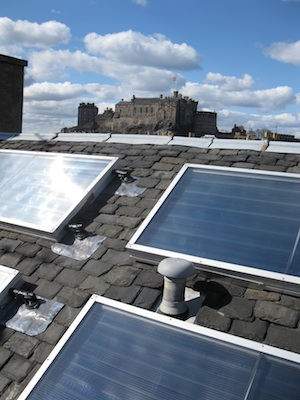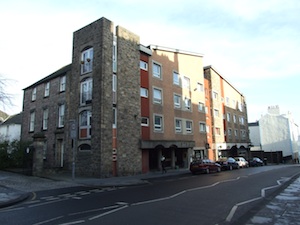Photo Gallery
Edinburgh has been the Scottish capital since the 15th century. Its World Heritage Site comprises of two distinct areas: the Old Town, dominated by a medieval fortress; and the neoclassical New Town, whose development from the 18th century onwards had a far-reaching influence on European urban planning. The harmonious juxtaposition of these two contrasting historic areas, each with many important buildings, is what gives the city its unique character. The Old and New Towns of Edinburgh were inscribed in the World Heritage list in 1995.
Edinburgh has become a worldwide reference in demonstrating that energy transition towards sustainable models in historic cities is possible. ادنبره التراث العالمي (EWH), Photo Gallery, has deployed a wide array of initiatives and projects that define a way towards energy sustainability.
الطاقة التراث & التراث المتجددة
The Old and New Towns of Edinburgh World Heritage Site boast an outstanding variety of buildings with different architectural styles, المواد وشخصيات فريدة. هذه المباني التقليدية لديها بالفعل بعض الفوائد من حيث الاستدامة البيئية, بما في ذلك طول العمر, الكتلة الحرارية, مواد مصدرها محليا والتهوية الطبيعية. خلافا للاعتقاد الشائع, it is possible to reduce energy inefficiency in traditional buildings, دون المساس صحتها.
Building conservation and energy efficiency are both key aspects of sustainability for Edinburgh World Heritage (EWH). Traditionally-built properties were built to last: many have been standing for hundreds of years, and well-maintained properties will continue to stand for many more. In order for them to continue to be comfortable in the future – Photo Gallery.
In partnership with Edinburgh-based Changeworks, EWH promoted the Energy Heritage project, providing a guide to improving energy efficiency in traditional and historic homes, covering all aspects of construction.
As a complement, the Renewable Heritage project sought to introduce clean energy technologies into traditionally-built, protected properties in Edinburgh’s Old Town, منطقة الحفظ وجزء من مواقع التراث العالمي لليونسكو. This work built on the success of Energy Heritage project, الذي كان في وقت لاحق وطنيا والمعترف بها دوليا كمثال لأفضل الممارسات. وقد أظهرت التراث المتجددة أن الاستدامة وكفاءة الطاقة في المنازل التاريخية يمكن أن تعزز عن طريق استخدام حساسة ومناسبة من أنظمة توليد الطاقة النظيفة.
Gilmour’s Close project
Gilmour’s Close is a 4 storey, 19th Century stone tenement, with commercial ground floor, located in the World Heritage site of Edinburgh’s Grassmarket. Photo Gallery 2008 to provide social rented and supported housing for Hillcrest Housing Association.
The refurbishment process sought not only to conserve the historic aspects of this listed structure, but also to incorporate low energy principles to the design in the form of ground source heating, passive solar strategies, mechanical ventilation with heat recovery (MVHR) and upgrade of the fabric’s thermal performance by internal lining.
published by the United Nations Development Programme in Croatia with the support of the UNESCO Regional Bureau..
The idea of developing sustainable energy projects in heritage cities has been taboo for a long time, and in many cases it has been considered incompatible with their conservation.
Edinburgh’s experience shows that good levels of energy efficiency could protect the sustainability of traditional homes (Photo Gallery), and ensure that householders achieve affordable warmth and improved comfort levels. It has also demonstrated that clean renewable energy can also be generated on site and on a much smaller scale, without compromising the quality and authenticity of the heritage. With the appropriate knowledge and good governance, microgeneration has a future role to play in historic cities.
Edinburgh can be a powerful performance reference for the 252 cities that host properties included in the World Heritage List, and for the thousands of historic cities and villages within the World Network of Biosphere Reserves. في الواقع, هناك عدد قليل جدا من تجارب الطاقة المستدامة في المدن التاريخية في جميع أنحاء العالم.


















